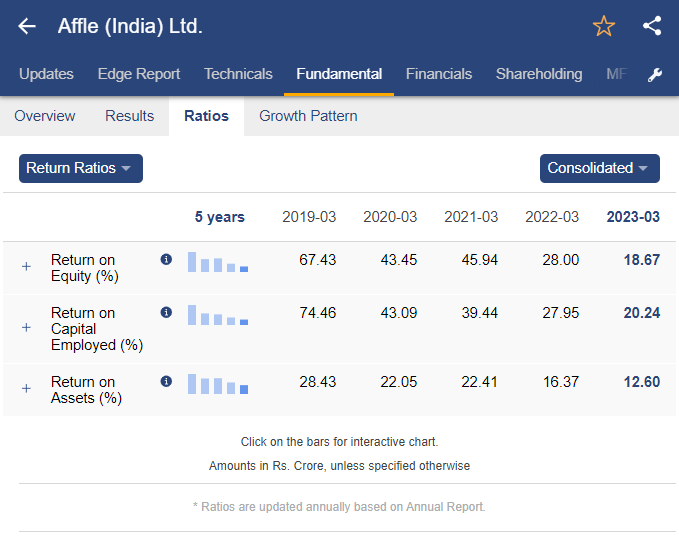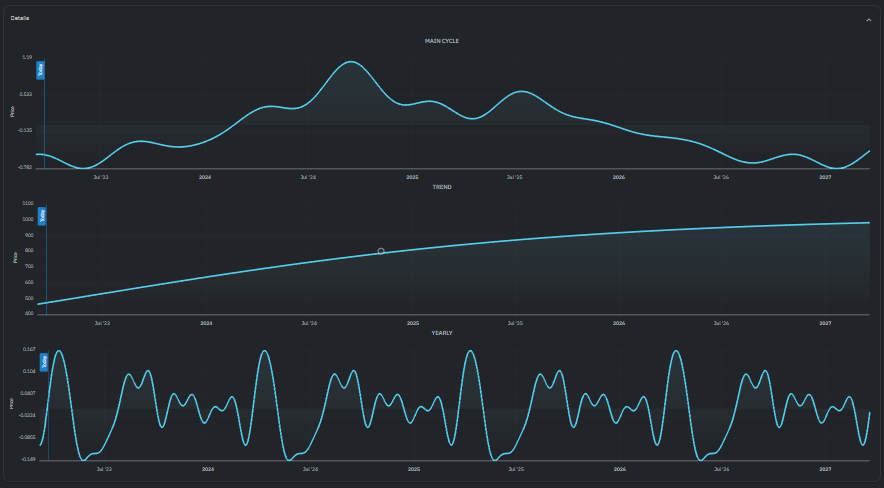20 Excellent Tips For Deciding On AI Stock {Investing|Trading|Prediction|Analysis) Websites
Top 10 Tips On Assessing The Strategy Customization Of Ai Stock Forecasting/Analyzing Trading PlatformsIt is vital to know that AI trading platforms with predictive analysis of stocks can give users the option of customizing their platform according to their trading goals, risk tolerances, and market conditions. A platform with a variety of customizable features can enhance your trading. Here are 10 top strategies to help you evaluate the capabilities of a platform to modify your strategy:
1. Evaluate Pre-Built Strategy Templates
The variety of templates available: Find out whether the platform has various pre-designed strategies to suit different styles of trading (e.g. swing trading, day trading, long-term investing).
User-friendly: Check out how easy it is to modify and apply these templates according to your requirements.
Performance history: Verify that the platform is able to provide previous data on performance that can be used to create pre-built strategic plans.
2. Assess Customized Strategy Creation
Drag-and-drop: Look for platforms that provide drag-and-drop interfaces to create custom strategies.
Look for options to code. For more advanced users, it may be necessary to check whether the platform allows custom programming.
Flexibility. Make sure you can identify key elements such as risk management parameters, entry/exit regulations, and any other components that comprise your plan.
3. Check for Backtesting Capabilities
Historical data: Make sure that the platform is equipped with enough historical data available to backtest strategies.
Modifiable parameters - Make sure that you have the ability to change parameters (e.g. timeframes, indicators) during backtesting.
Performance metrics: Determine whether the platform provides precise performance metrics such as win rate (e.g. Sharpe ratio), drawdown, and various other metrics to determine if the strategies have been tested back.
4. Evaluate Real-Time Strategy Testing
Paper trading: Make sure that the platform supports simulation and paper trading modes for testing strategies in real time, without risking your capital.
Live testing is a fantastic method to determine whether your strategy is able to be tested on the real world market using tiny amounts.
Real-time Adjustments: Test whether you're able to adjust in real-time, based upon the market's conditions.
5. Evaluation of Integration based on Technical Indicators
Indicator library: See if the platform offers a comprehensive collection of indicators that are technical (e.g. moving averages, RSI, MACD).
Custom indicators. You must ensure that you are able to develop or utilize customized indicators as part of your strategy.
Check the combination of indicators.
6. Check for Risk Management Tools
Stop-loss/take-profit: Ensure the platform allows you to set stop-loss and take-profit levels within your strategies.
Size of the position. Determine whether you can create rules for sizing positions (e.g. percentage or a set amount) and control the risk.
Risk-reward Ratio: Verify that the platform is able to set individual risk-reward limits for trades and strategies.
7. Evaluate Multi-Asset Strategy Support
Asset classes: Ensure the platform can support strategies for various asset classes (e.g. stocks, ETFs, options and forex).
Strategies for cross-assets: Determine whether you're able to create strategies that combine multiple asset classes.
Market coverage: Check if the platform offers the services you need (e.g. US, international or cryptocurrencies).
8. Evaluate Automation and Execution
Automated trading. Check if the platform allows automated execution that is based on predefined strategies.
Types of orders: Check to see if the system permits different order types (e.g. limit or market) when executing a strategy.
Latency - Verify the platform's ability to execute trades on time and efficiently, particularly when using high-frequency strategies.
9. Look for strategies optimization tools
Optimization of parameters: Ensure that the platform offers tools for optimizing strategy parameters (e.g. grid search and genetic algorithm).
Machine learning: Ensure the platform is machine learning to help refine and optimise strategies.
Assessment of scenarios: Determine whether your platform can test various strategies to deal with different market scenarios, like bullish, bearish, or volatile.
Review Community Feedback and User Feedback
User feedback: Utilize reviews from users to assess the efficiency of the platform for customizing strategies.
Community forums: Check whether you can find forums where members discuss and exchange ideas for custom strategies.
Support resources: Ensure that the platform provides tutorials, webinars or documentation that will help users develop and improve their strategies.
Bonus Tips:
Trial period: Test the platform's customization features at no cost by registering for a trial or demo.
Scalability: Make sure the platform you choose to use can manage complex strategies that change when you trade.
Support for customers: Find out if the platform offers support for any strategy-related queries.
With these suggestions, you will be able to evaluate the potential of an AI stock-predicting/analyzing trading platform to modify strategy. This will allow you to choose a trading platform that aligns with your objectives in trading and lets you develop and refine strategies. Platforms with strong customization capabilities can help you adapt to the changing market conditions and improve the performance of your trading. See the best ai for trading for website advice including trading with ai, copyright advisor, ai stock trading, trading ai, ai stock trading app, trade ai, trading chart ai, ai stock, copyright advisor, copyright ai trading bot and more.

Top 10 Tips For Evaluating The Reputation And Reviews For Ai Stock Predicting/Analyzing Trading Platforms
It is important to assess the reviews and reputation of AI-driven trading and stock prediction platforms to confirm their trustworthiness, reliability and effectiveness. Below are the top 10 tips to evaluate reviews and reputation.
1. Check Independent Review Platforms
Review reviews on reputable platforms such as G2, copyright, and Capterra.
Why: Independent platforms are impartial and offer feedback from real users.
2. Review user reviews and cases research
Visit the official website of the platform or other sites to see user testimonials.
What's the reason? These insights give real-time feedback about the performance of your product and how satisfied users are.
3. Review of Expert Opinions, Industry Recognition
Tip. Find out if the platform is approved or reviewed by industry experts or financial analysts, reliable publications, or any other.
Expert endorsements are a great way to add credibility and trustworthiness to a platform.
4. Social Media Sentiment
Tips - Check social media sites like Twitter, LinkedIn or Reddit for comments and sentiments from users.
Social media allows you to get the honest opinions of people and the latest trends.
5. Verify Compliance with Regulatory Regulations
Tips: Make sure that the platform is in compliance with data privacy laws as well as financial regulations.
What's the reason? Compliance helps ensure the platform runs legally and ethically.
6. Look for transparency in performance indicators
Tips Check if the platform uses transparent performance metrics.
Transparency is essential because it builds trust, and lets users assess the performance of the platform.
7. How to Assess Customer Support
Tips: Read user reviews on the customer support of the platform's responsiveness and efficiency.
Why: Reliable support is essential for resolving problems and ensuring a pleasant user experience.
8. Red Flags to Look for in Reviews
Tip - Look out for recurring complaints like poor performance, hidden costs or a lack of updates.
The reason: A consistent lack of feedback could signal a platform issue.
9. Evaluation of User Engagement and Community Engagement
Tip: See whether the platform interacts with users often and has an active community.
Why: A strong and active community indicates that there is a high degree of satisfaction among users.
10. Check out the track record of the company
Look at the company’s history along with the leadership team, as well as its performance in the space of financial technology.
What's the reason? A track record of accomplishment increases confidence in the reliability of platforms and expertise.
Extra Tip: Compare Multiple Platforms
Compare reviews and reputations of multiple platforms to identify the one that is best suited to your needs.
With these suggestions You can evaluate the reviews and reputation of AI trading and stock prediction platforms, ensuring you choose a reliable and efficient solution. Follow the top rated ai stock price prediction for site info including chart ai for trading, ai investment platform, best ai trading app, ai stock trading app, best stock analysis website, stocks ai, ai trading platform, investment ai, incite ai, ai for stock trading and more.
